
A video wall display is several panels that modularly create a single screen. A variety of manufacturers, models, and installation methods allow you to solve completely different tasks with the help of video walls: from showing slides at a meeting or a report to presenting blockbuster trailers on a screen the size of a house.
We’ve rounded up the key factors to consider when choosing a video wall. At the end of the article is a short checklist that you should go through before making a final decision.
What tasks will the video wall solve?
LCDs are professional displays that are suitable both for making up large video walls and for small installations, for huge halls, and for small audiences from 30–40 sq. m. LCDs are also useful for tasks where you need to show high-resolution pictures, detailed images at a short distance. For example, this is why LCDs are installed in situational and dispatch centers.
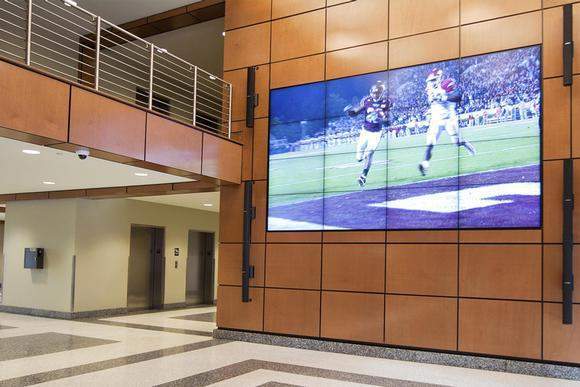
LED – these are LED displays, which are made up of “cabinets”. They are brighter, they have nicer pictures and more resolution. But LED panels have their own nuances.
In conventional LED panels, the so-called pixel pitch is larger, that is, the distance from the center of one diode to the center of another diode. If you do not dive into the subtleties of physics, then in practice this means that it is difficult to view the LED panel at short distances. Simply put, if we get close to the LED screen, it will be uncomfortable for our eyes, we will literally see every pixel. Therefore, LED walls should be used in large rooms where the audience is far from the wall.
There are LED panels with a small pixel pitch, only 0.9 mm, but they are significantly more expensive. Therefore, in small rooms where the audience is next to the screen, it is easier to use LCD.
LEDs are effective if we need to place a wall, for example in a shopping mall. There is a lot of space, and the image on the wall will be bright and with high picture quality. And LED is practically the only option if you need to install a wall outside. For example, for a media facade.
Walls built with LED panels tend to be more expensive than walls built with LCD panels. All other things being equal, by about 20-30%.
LCD panels and LED panels have other differences – we will talk about them later in the article.
The size. In what room will the video wall display be placed
The size of the video wall depends on the area of the room, or rather, on the comfortable distance between the audience and the wall. If you put the audience too close, it will be uncomfortable to watch, like in a movie theater on the front row – the eyes will not be able to capture the entire image at once.
For example, you have a small room of 70 square meters, a conference room. The length of the room is 10 meters. Let’s try to put a small 2×2 video wall there, consisting of four panels, every 55 inches in area.

Take the height of the video wall. The height of one 55-inch panel is 68 cm while two of them are about 1.3 meters. If you have an LCD panel, then multiply the height by three, it turns out 3.9 meters. If LED, then 3.5-4 – that is about 4.5 meters. This is the minimum distance at which the first viewer must be for comfortable viewing.
Next, see if it will be convenient for you to place all the viewers in the remaining space.
Of course, there are rooms and fewer. In this case, it is better and easier to take not a video wall, but a single professional panel – there are such panels up to 100 inches in size. If you need more, then it is better to make modular walls.
And also consider the use case – the content on the video wall is not always closely examined. For example, if you are making a huge media facade, then the wall can and should be made larger.
Standard diagonals for the panels that make up the walls are now 46 and 55 inches. There are also 65 inches, but they are incomparably more expensive – it’s easier to take nine 55s instead of six 65s.
You need to choose depending on what overall wall size you need.
The thickness of inter panel seam
When we assemble the panels into a single video wall, small seams remain between the modules. The thickness of this joint depends on the frames of the individual panels. The smaller such seams, the more expensive the wall is.
Basically, you should pay attention to the thickness of the inner panel seam when choosing an LCD panel. If you buy a wall of LED screens, then you will practically not see seams – firstly, they are minimal there, and secondly, such panels look at a great distance, that is, the eye quickly gets used to it and is not irritated.
See how the price can change.
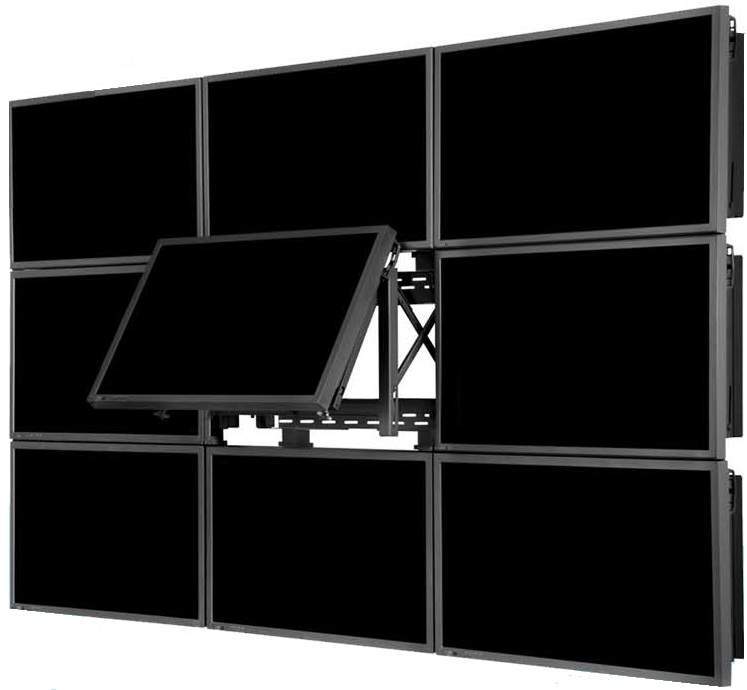
For example, take sufficiently large seams – two panels with a frame of 1.7 mm, that is, the total seam is multiplied by two and we get almost 4 mm. Such a seam will be visible to the eye very well – these walls should be used for non-interactive tasks. Perhaps to show presentations or distributed video communication in meetings. Such panels cost 150 thousand rubles.
- If you take a panel with a bezel of 0.9 mm, that is, a common bead of 1.8 mm, it will be much better for the eye. The viewer will not focus on the grid. The price of such panels, other things being equal, will be twice as expensive, from 350 thousand rubles.
There are also so-called “seamless panels” – these are panels with a seam of 0.8 mm, such a frame is completely invisible to the eye. Such panels should be taken for small spaces and for situations where you need very high quality and display of interactive content.
There is practically no seam, but the price is higher – one-panel costs 500 thousand rubles, or almost 3.5 times more expensive than panels with a thick seam of 4 mm.
Screen brightness of Video Wall Display
Choose the brightness depending on where your wall will be. If this is a meeting room or a meeting room where you can dim the outside light, then you can not pay much attention to the brightness.
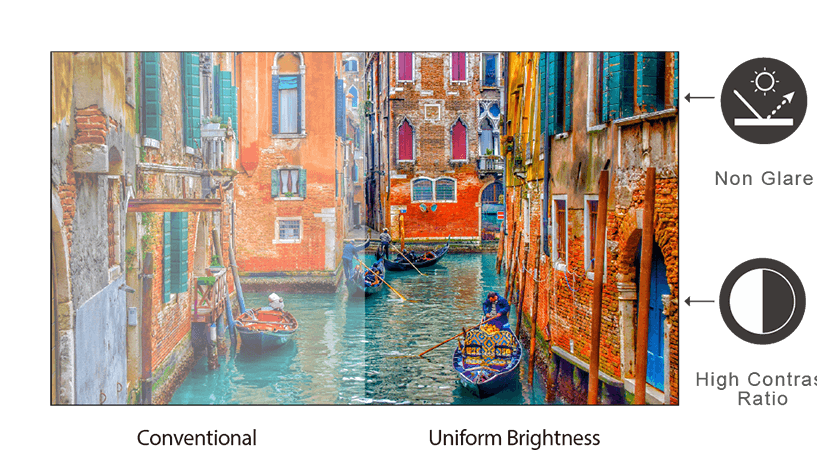
If you decide to put a wall on the street or in a large hall with powerful lighting, you should take panels with a high brightness indicator. If the brightness of the screen is low, viewers will not be able to see the content – there will be a “light” in the picture. Try to take a smartphone, reduce the brightness to a minimum and go outside on a sunny day – nothing will be visible on the screen. The same goes for the video wall.
Panel brightness is measured in cd/sq. m. Most walls work with indicators of 400-700 cd / sq. m. If you put a large wall on the street, especially on the sunny side, look for an indicator of 1000 cd / sq. m. As a rule, LED displays are always brighter than LCD. Usually, the brighter the panel, the more expensive it is.
Working mode SMD Video Wall Display
Video walls can broadcast content around the clock and seven days a week or support a different mode of operation. Look at this figure in the technical specifications if you need a wall that will work without interruption.
Basically, two types of panels are now common – round-the-clock, that is, 24/7 (shopping centers, control rooms, showrooms, bars, etc.), and panels for viewing during the working day, that is, 16/7 (office, conference rooms).
Lifetime
The reliability of the video wall is determined by the manufacturer – each panel has a special characteristic, “service life”, which is indicated in hours.
For example, now for LED panels, a good indicator is 50,000 hours. If the wall is designed for round-the-clock operation, then you should count on the problem-free broadcast of content for 2083 days or almost six years.
Please note – the real service life is indicated by well-known and time-tested manufacturers. If you take unknown brands, then the indicated service life is usually less than the panel actually works. We recommend buying panels from well-known manufacturers.
Screen resolution of Video Wall Display Screens
This indicator is slightly different from the “screen resolution” we are used to in-home TVs. The fact is that the content that is broadcast on the video wall is actually stretched across several screens at once. Therefore, even if we put four LCD panels with Full HD resolution on one wall and feed content with Full HD resolution to them, the picture will turn out to be normal HD as a result – it will be displayed on four screens at once.
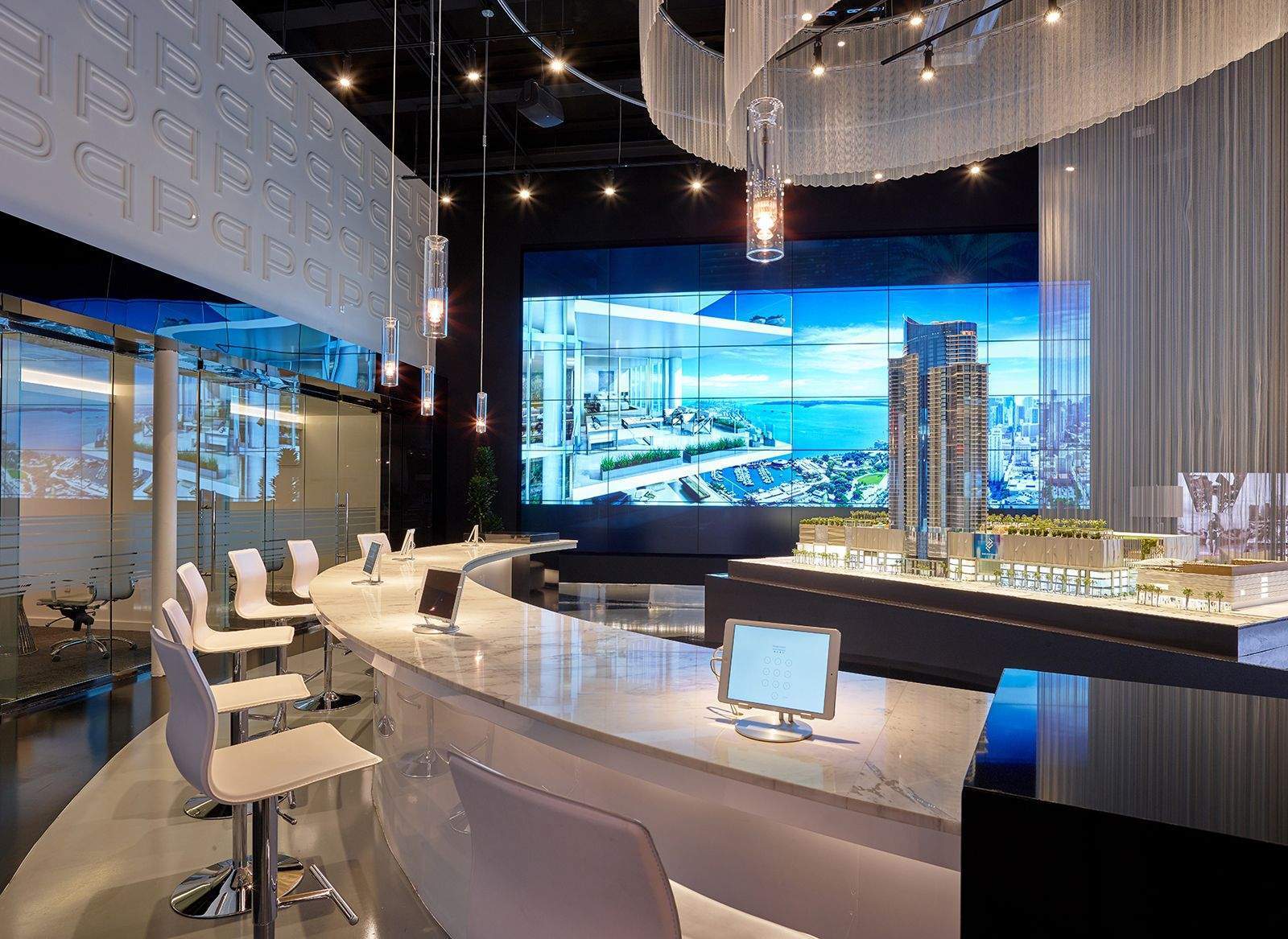
If you need to show small details in high quality, in a large room, and for a large number of employees – for example, microcircuits in a factory or in a situational center – then you should focus on LED displays with a small pixel pitch and build the desired resolution by typing the screen with cabinets. And if the room is small, then you can make a wall of LCD panels, also with high resolution and a minimum thickness of the inner panel seam.
In fact, you should focus on the size of the room and the type of content you plan to show. For example, you will show presentations, and slideshows, which means that it is quite possible to put the same Full HD LCD display.
Keep in mind that if you want really high resolution, then you need to build a large wall and prepare content specifically for these tasks.
Availability of spare panels for Video Wall Display
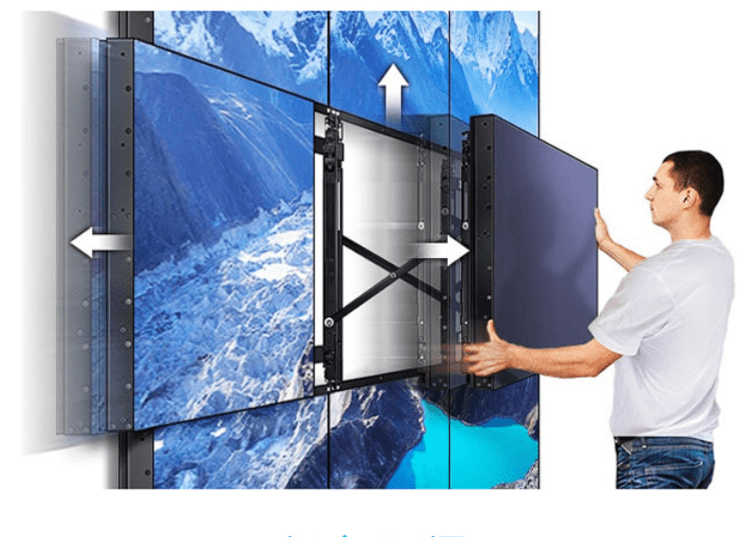
Try to choose panels from a well-known manufacturer, preferably popular models. This is useful if you need to replace a screen that has been broken due to careless handling or some accident.
The fact is that over time, the color rendering of the panels changes slightly – some go into warm shades, others into cold ones. This is a normal process, and if this happens with all panels installed in the wall at once, then we do not notice changes.
But if one panel fails and we put a new one in its place, then a different color rendering will be immediately noticeable. If you take panels of the same model, then the problem is eliminated by calibrating the wall. If there are no such screens on the market, you will have to look for something similar, and it’s not a fact that such a panel will fit.
Even for smaller video walls, 3×3 or 4×4, we recommend budgeting for replacement panels right away. That is, to the nine main boards, immediately take another 3-4 panels in case something happens to the wall.
Possibility to add panels to video Wall Display Screens
It is worth deciding in advance whether you plan to increase the video wall size. For example, now buy and install a 3×3 wall, and in a year or two, build it up to 4×4.
If the building is potentially required, it is worth considering panels with such a function. And look at the capabilities of the internal controller – there are panels that can operate in a maximum of 4 × 4 mode, and there are those that can withstand a load of 20 by 20 screens. However, the problem with the controller is solved by purchasing an additional device.
Consider the color rendering aging factor – take panels from popular manufacturers.
Possibility to create an original form
The video wall standard is a rectangle. If you need a wall of the original form, with protruding parts, then you will have to invest in an external video controller to adjust the image.
If we talk about the choice of the panels themselves, it is enough to take popular models from well-known manufacturers. All panels have the ability to build an unusual shape, here it is rather necessary to concentrate on the professionalism of the installers.
Mounting type for Video Walls Screens
Mount video walls using floor, wall, or ceiling mounts. Another option is to make a mobile installation, that is, the video wall will be located on a platform that can be moved.
Now there is no difference in which wall to buy for a particular type of installation – all panels are great for any fastening. Rather, it is a matter of choosing a team that will integrate the panels.
Pay attention to the speed of installation. In general, under ideal conditions, installing a small 3×3 video wall takes about 6-8 hours. Or already 2 days: the first day is general installation and installation, and the second day is micro-calibration and tuning. To say the exact dates is possible only after studying the specific conditions.
